Introduction.
Culture is the essence of any nation, shaping its identity, values, and way of life. In this blog, we embark on a journey to explore the rich and diverse cultures of seven distinct countries: Algeria, Bangladesh, Cameroon, Canada, China, Chile, the Cook Islands and others. Each country has its unique blend of traditions, languages, and geographical features that contribute to its cultural tapestry. From the vast deserts of Algeria to the bustling cities of China, the dense forests of Cameroon to the serene beaches of the Cook Islands, these nations offer a fascinating glimpse into the rich tapestry of human history and geography.
The diverse cultures of China, Chile, and the Cook Islands offer a fascinating glimpse into the rich tapestry of human history and geography. Each nation has its unique cultural heritage, deeply influenced by its geography, history, and demographics. This blog will delve into the cultural identities, geographical features, historical contexts, and societal structures of these three distinct regions.
Each of these cultures showcases a rich historical and linguistic heritage shaped by geography, historical events, and demographic changes. Germany’s deep historical roots, Gibraltar’s unique colonial identity, Haiti’s revolutionary past, and Paraguay’s blend of indigenous and immigrant influences illustrate the diverse ways in which national identities and cultural practices evolve.
Algeria: A Land of Diverse Heritage
Identification and Demography
Algeria, officially known as Al-Jaza’ir, is a country in Northern Africa with a rich historical and cultural background. The name Algeria is derived from its capital city, Algiers, one of the country’s oldest continuous settlements. With an estimated population of over 31 million as of 2000, Algeria is predominantly Arab (80%) and Berber (20%), with less than 1% being European. The Berbers, divided into groups such as the Kabyles, Chaouias, M’zabites, and Tuaregs, retain much of the indigenous culture, especially in isolated regions.
Algeria, the largest country in Africa, boasts a landscape as diverse as its cultural heritage. The country is a melting pot of Arab, Berber, and French influences, each leaving an indelible mark on its traditions, language, and cuisine. The Sahara Desert, which covers much of Algeria, contrasts sharply with the Mediterranean coastline, providing a stunning backdrop to the country’s historical sites and bustling cities. The ancient city of Algiers, with its white-washed buildings and vibrant markets, reflects the nation’s complex history and dynamic culture. Traditional music, such as the soulful Chaabi and the rhythmic Rai, along with intricate crafts and culinary delights, showcase Algeria’s rich cultural tapestry.

Location and Geography
Algeria is strategically located, bordering Tunisia and Libya to the east, Niger, Mali, and Mauritania to the south, Morocco and Western Sahara to the west, and the Mediterranean Sea to the north. Covering 919,595 square miles, it is the second-largest country in Africa and the eleventh largest in the world. The majority of the population resides in the fertile northern coastal area, known as the Tell. This region receives winter rains, supporting agriculture on its 3% arable land. The vast southern part of the country is dominated by the Sahara Desert, with its striking sandstone formations, oases, and the snow-topped Mount Tahat, the highest point in Algeria.
Linguistic Affiliation
The linguistic landscape of Algeria is marked by its history. The original language, Berber, has various dialects. Arabic, introduced early in the country’s history, became dominant along with the spread of Islam. French, imposed during colonial rule, remains important in business and education, although Arabic is the official language.
Cultural Identity
Algerian culture is a blend of Arab and Berber influences, with a significant impact from French colonial history. The Arab population primarily identifies with a shared Algerian culture, while the Berber tribes, especially in the south, maintain their distinct cultural identities. This cultural diversity is reflected in the country’s music, dance, cuisine, and traditional clothing.
Bangladesh: A Nation Shaped by Water and Resilience
Identification and Demography
Bangladesh, meaning the “land of the Bengal language,” is a South Asian country with a population of approximately 125 million, making it the most densely populated non-island nation in the world. The population is overwhelmingly Bengali (98%), with small tribal and non-Bengali groups making up the remaining 2%. The religious composition includes Muslims (83%), Hindus (16%), and a small percentage of Buddhists, Christians, and others.
Bangladesh, a country crisscrossed by rivers, is known for its lush greenery and vibrant culture. The Bengali people have a rich heritage of literature, music, and art, deeply rooted in their history and geography. The Bengali language and traditions are celebrated through festivals like Pohela Boishakh (Bengali New Year) and Durga Puja, which bring communities together in joyous celebration. The Sundarbans, the largest mangrove forest in the world, and the historical city of Dhaka with its bustling markets and ancient mosques, highlight the natural beauty and cultural richness of Bangladesh. The resilience of its people, evident in their response to natural calamities and socio-economic challenges, is a testament to the enduring spirit of Bangladesh.

Location and Geography
Bangladesh is located at the northern edge of the Bay of Bengal, bordered by India to the west and north and Myanmar to the southeast. The country is predominantly a low-lying floodplain, with half of its area actively deltaic and prone to monsoon flooding from May to September. The Ganges/Padma and Brahmaputra/Jamuna rivers are the main waterways. Dhaka, the capital, lies near the confluence of these rivers. The hilly regions in the north and southeast are home to tea plantations and hardwood forests.
Linguistic Affiliation
The primary language of Bangladesh is Bangla (Bengali), an Indo-European language spoken by about 300 million people in Bangladesh, West Bengal, Bihar, and other Indian states. Bangla has two distinct forms: Sadhu Basha (formal language) and Cholit Basha (common language). While Sadhu Basha is used in literature and formal contexts, Cholit Basha is the vernacular spoken by the majority. Dialectal variations exist, but mutual intelligibility is generally maintained.
Cultural Identity
Bangladesh’s culture is deeply rooted in its agricultural lifestyle and riverine geography. The plains culture dominates the delta region, while smaller tribal groups inhabit the hilly areas. These tribal groups, such as those in the Chittagong Hill Tracts, often resist national government control and population pressures. The country’s cultural practices include traditional music, dance, and festivals, with a rich heritage of poetry and literature.
Cameroon: A Nation of Ethnic and Linguistic Diversity
Identification and Demography
Cameroon, named after the Wouri River by Portuguese explorers, is a Central African country with significant regional and cultural diversity. The country is divided into Anglophone and Francophone regions, reflecting its colonial history under British and French rule. Cameroon has a population of about 25 million, with numerous ethnic groups such as the Grassfielders, Bakweri, Fulani, Beti, Bamiléké, and Bamoun.
Cameroon is often referred to as “Africa in Miniature” due to its diverse landscapes and cultural richness. The country is home to over 250 ethnic groups, each with its own language, customs, and traditions. From the coastal plains to the mountainous regions, Cameroon offers a variety of cultural experiences. Traditional festivals, such as the Ngondo Festival of the Sawa people and the Bamoun Sultanate’s celebrations, reflect the country’s vibrant heritage. Music and dance, integral to Cameroonian culture, are showcased through genres like Makossa and Bikutsi. The country’s diverse cuisine, influenced by its various ethnic groups, offers a taste of its rich cultural mosaic.

Location and Geography
Cameroon is bordered by Nigeria to the west, Chad to the northeast, the Central African Republic to the east, and Equatorial Guinea, Gabon, and the Republic of the Congo to the south. The country’s geography includes coastal plains, mountains, savannas, and rainforests. The western region is dominated by the volcanic Mount Cameroon, while the north features the Sahelian landscape. The central and southern regions are covered by dense rainforests.
Linguistic Affiliation
Cameroon is officially bilingual, with English and French as the official languages. The English-speaking region, consisting of the Southwest and Northwest provinces, uses Pidgin English as the lingua franca. The French-speaking region, which includes eight provinces, uses French in education and legal systems. Indigenous languages are also widely spoken, reflecting the country’s ethnic diversity.
Cultural Identity
Cameroon’s cultural diversity is reflected in its regional traditions and ethnic groups. The Grassfielders of the Northwest Province have hierarchical chiefdoms, while the Bakweri of the Southwest practice rites of healing and initiation. In the Francophone region, the Fulani dominate the north with their Islamic culture, while the southern provinces are largely Christian or animist. The Bamiléké and Bamoun of the West Province are known for their agricultural practices and entrepreneurial spirit. The Baka, a forest-dwelling group in the East, maintain a hunter-gatherer lifestyle.
Canada: A Mosaic of Cultures
Identification and Demography
Canada, named after the Iroquoian word “kanata” meaning village, is a North American country with a population of nearly 30 million as of 1996. The country has experienced slowing population growth, partly offset by increased immigration. Canada is a bilingual nation, with English and French as the official languages. English speakers make up about 60% of the population, while French speakers constitute around 24%.
Canada, known for its vast landscapes and multicultural society, is a country where diversity is celebrated. The influence of Indigenous peoples, along with French, British, and other immigrant cultures, has shaped Canada’s identity. The majestic Rocky Mountains, the cosmopolitan cities of Toronto and Vancouver, and the historic sites of Quebec City highlight the geographical and cultural diversity of Canada. Indigenous traditions, such as powwows and storytelling, coexist with festivals like Canada Day and the Calgary Stampede, creating a vibrant cultural landscape. Canada’s commitment to multiculturalism is reflected in its policies and everyday life, fostering a society where various cultures thrive together.
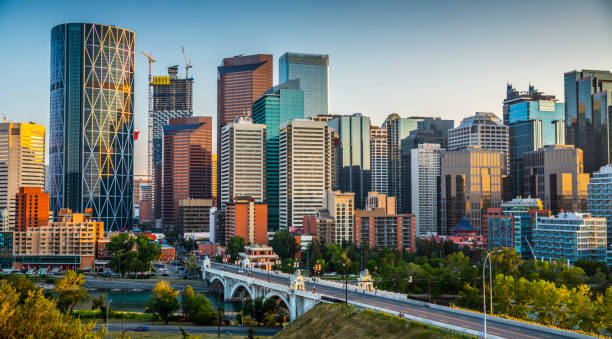
Location and Geography
Canada is the second-largest country in the world, spanning from the Atlantic to the Pacific Ocean and extending northward to the Arctic Ocean. The country’s geography includes the eastern maritime provinces, the central boreal forest region, the prairie grasslands, and the Rocky Mountains in the west. The northern regions are dominated by tundra and Arctic eco-zones.
Linguistic Affiliation
Canada’s bilingual nature is reflected in its official languages, English and French. The central region, particularly Ontario and Quebec, has the highest concentration of both languages. Immigration patterns have diversified the linguistic landscape, with significant numbers of speakers of Chinese, Italian, German, and other languages. First Nations languages such as Cree, Inuktitut, and Ojibway also hold cultural importance.
Cultural Identity
Canada’s cultural identity is shaped by its regional diversity and immigration patterns. The central region, with its rich agricultural land and manufacturing hubs, is the most populous and culturally diverse. The prairie and maritime regions have stabilized ethnically and culturally, while the West Coast is characterized by its unique isolation. Urban-rural contrasts further define cultural identities, with urban areas seen as modern and sophisticated, and rural areas as hardworking and community-oriented.
Culture of China
Identification and Demography
The Chinese call their country Zhonghua Renmin Gongheguo, or Zhong Guo for short, which translates to the People’s Republic of China. Historically referred to as the Middle Kingdom, this name reflects China’s perception of itself as the center of civilization. Despite its vast size, Chinese culture exhibits a remarkable level of uniformity. However, the country is home to fifty-five recognized minority groups, each with its own unique cultural practices, languages, and customs.
China is the world’s most populous country, with an estimated population of over 1.4 billion as of 2023. The Han Chinese constitute approximately 92% of the population, with the remaining 8% belonging to various ethnic minorities, including Zhuang, Uighur, Hui, Yi, Tibetan, Miao, Manchu, Mongol, Buyi, and Korean. While the Han Chinese predominantly reside in the more developed Inner China, minority groups are more dispersed, often inhabiting the remote and rugged regions of Outer China.

China, with its long history and vast territory, offers a rich tapestry of culture and tradition. The country’s cultural heritage is evident in its ancient philosophy, literature, art, and architecture. From the Great Wall to the Forbidden City, historical landmarks showcase China’s imperial past. The diverse geography, from the Gobi Desert to the Yangtze River, influences regional cultures and lifestyles. Traditional festivals, such as the Lunar New Year and the Mid-Autumn Festival, are celebrated with great fervor, highlighting the importance of family and community. China’s rapid modernization has created a unique blend of the old and the new, where ancient traditions coexist with cutting-edge technology and urban development.
Location and Geography
China covers a land area of 3,691,502 square miles (9,596,960 square kilometers), making it the third-largest country in the world. It shares borders with fourteen countries, including Russia, Mongolia, India, and Vietnam. China’s vast and diverse landscape includes the world’s highest point, Mount Everest, on the border with Nepal, and the expansive deserts, plateaus, and mountain ranges of the west. The east is characterized by fertile plains, river deltas, and hills.
The Yangtze River, the longest river in China, serves as the natural dividing line between northern and southern China. The country also experiences a wide range of climatic conditions, from tropical in the south to subarctic in the north. Endangered species such as the giant panda and the Yangtze alligator are native to China, though conservation efforts are often secondary to economic development.
Linguistic Affiliation
Mandarin Chinese, also known as Putonghua, is the official language of China and is based on the Beijing dialect. The modern spoken language, bai hua, replaced the classical language in the 1920s. The Chinese writing system, which has remained largely unchanged for thousands of years, is complex, with nearly sixty thousand characters, though only about five thousand are commonly used. Unlike phonetic alphabets, Chinese is written in pictographs and ideographs, symbols that represent concepts rather than sounds. To enhance literacy, the communist government developed a simplified writing system. Pinyin, a system of writing Chinese words using Roman characters, is also widely used.
Cultural Symbols
The Chinese national flag, with its red background and yellow stars, symbolizes the revolution and the unity of the Chinese people under the leadership of the Communist Party. The dragon, a mythical creature, is a prominent cultural symbol associated with power and good fortune. The Great Wall of China, spanning 1,500 miles, is another powerful national symbol, representing both the historical struggles and achievements of the Chinese civilization.
Historical and Cultural Context
The history of China is marked by periods of unity and division, with the Great Wall serving as a significant historical demarcation between Inner and Outer China. The construction of the Great Wall began in the third century B.C.E. and continued during the Ming Dynasty in the fifteenth century. It was built to protect the country from military invasions, and its construction is a testament to the engineering prowess and the labor of countless workers, many of whom perished during its construction.
Societal Structure
China’s societal structure is influenced by its vast population and the government’s efforts to control population growth and maintain national stability. The government’s one-child policy, introduced in the late 20th century, has had profound effects on the demographic landscape. Minority groups, however, were largely exempt from this policy, leading to different population growth rates among various ethnicities.
The Chinese government has also encouraged the migration of Han Chinese to minority regions, aiming to integrate these areas more closely with the rest of the country and to mitigate potential separatist movements. This policy has sometimes led to tensions between the Han majority and minority groups, as well as significant cultural exchanges and blending.
Culture of Chile
Identification and Ethnic Composition
Chile, a country in southwestern South America, is often described as one of the most homogeneous nations in Latin America in terms of ethnicity and culture. The name “Chile” is believed to be derived from the native Aymará word “chilli,” meaning “the land where the earth ends.” Unlike many other Latin American countries, Chile has not experienced strong regionalism or conflicting cultural identities, largely due to significant internal migration from the central region to the northern and southern parts of the country since the late 19th century.
Despite the dominant national culture, some regional cultural traditions persist. In the northern provinces near Bolivia, Aymará Indians have maintained aspects of their Andean heritage. In the south, the Mapuche Indians have significantly influenced Chilean culture. The island of Chiloé, also in the south, has developed a distinct culture characterized by a blend of Indian and Spanish traditions, rich in music, dance, and mythology. Easter Island, located over two thousand miles off the coast, is home to native islanders who preserve many Polynesian traditions.
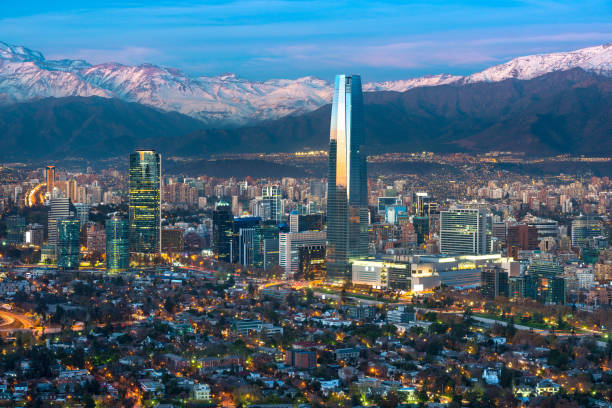
Chile, a country of geographical extremes, is known for its diverse culture and natural beauty. The Andes Mountains, the Atacama Desert, and the Pacific coastline create a stunning backdrop for Chilean culture. Indigenous traditions, particularly those of the Mapuche people, are an integral part of the nation’s heritage. Chilean music, dance, and festivals, such as the vibrant Fiestas Patrias, reflect the country’s cultural richness. The literary legacy of poets like Pablo Neruda and Gabriela Mistral adds to Chile’s cultural depth. The contrast between the modern capital of Santiago and the remote regions of Patagonia highlights the diverse experiences within the country.
Location and Geography
Chile is a long and narrow strip of land bordered by Peru to the north, Bolivia and Argentina to the east, and the Pacific Ocean to the west and south. Natural barriers such as the Atacama Desert in the north, the Andes Mountains to the east, and the cold waters of the Drake Sea to the south isolate Chile from the rest of South America.
The country’s unique geography includes a wide range of climates and regions. The northern region is extremely dry, home to the Atacama Desert, one of the driest places on Earth. The central region is fertile with a mild climate, supporting the country’s agriculture. The southern region is chilly and rainy, with icy fjords and glaciers at the southernmost tip. The capital city, Santiago, located in the central region, is the political, cultural, and economic hub of the country.
Demography and Ethnic Relations
Chile’s population is relatively homogeneous, with most people tracing their ancestry to European immigrants, primarily from Spain. Other significant immigrant groups include Germans, British, French, Italians, Croatians, Palestinians, and Jews. These immigrants have played crucial roles in the country’s academic, cultural, and political spheres.
While there is a dominant national culture, regional cultural identities are acknowledged and celebrated. The indigenous Aymará and Mapuche peoples, as well as the Polynesian inhabitants of Easter Island, maintain their cultural traditions, contributing to the rich cultural mosaic of Chile.
Historical and Political Context
Chile’s history is marked by periods of colonization, independence, and political upheaval. The Spanish colonization in the 16th century profoundly influenced the country’s culture, language, and societal structure. In the late 19th century, significant internal migration helped solidify a national identity, reducing regional disparities.
From 1973 to 1990, Chile was under a military regime led by General Augusto Pinochet. This period was marked by political repression, economic reforms, and significant emigration. Since the return to democracy, Chile has made substantial progress in political and economic stability, though the legacy of the military regime continues to influence the country’s political landscape.
Societal Structure
Chilean society is characterized by a strong sense of national identity and cultural homogeneity. The central region, particularly the Central Valley, has historically dominated the country’s political, cultural, and economic life. The government has made efforts to promote regional development and address disparities, but the influence of the central region remains significant.
Immigrants and indigenous groups have contributed to the cultural diversity of Chile, though the dominant culture remains strongly influenced by European, particularly Spanish, heritage. The societal structure reflects a blend of indigenous traditions and European influences, creating a unique cultural identity.
Culture of the Cook Islands
Identification and Demography
The Cook Islands, named after Captain James Cook who landed there in 1773, are a group of islands in the South Pacific. The population, estimated at around 20,407 in 2000, is predominantly Polynesian, with smaller populations of mixed Polynesian and European descent. The islands are divided into northern and southern groups, with the majority of the population residing in the southern islands, particularly on Rarotonga.
The Cook Islands, a group of 15 islands in the South Pacific, offer a glimpse into Polynesian culture. The islands’ remote location and natural beauty have preserved traditional practices and lifestyles. Cook Islanders celebrate their heritage through music, dance, and crafts, particularly during the annual Te Maeva Nui festival. The cultural practices of the Cook Islands are deeply connected to the natural environment, with traditional fishing, agriculture, and navigation playing important roles. The warm hospitality and strong sense of community make the Cook Islands a unique cultural destination.
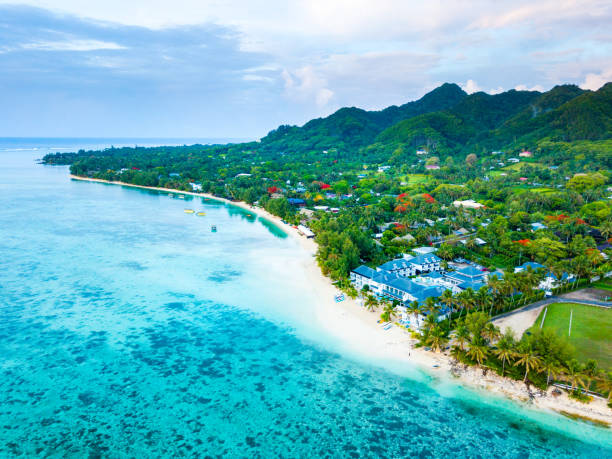
Location and Geography
The Cook Islands are part of Oceania, situated roughly halfway between Hawaii and New Zealand. The total land area is about 93 square miles (240 square kilometers), but the islands are dispersed over nearly two million square kilometers of ocean. The southern islands are of recent volcanic origin, characterized by hilly terrain, while the northern islands are coral atolls formed over ancient sunken volcanoes.
Linguistic Affiliation
English is the official language of the Cook Islands and is widely taught in schools. The common vernacular is Cook Islands Maori, also known as Rarotongan, which is closely related to the Maori languages spoken in New Zealand and Tahiti. Dialects vary among the islands, with some northern islands having their own distinct languages.
Cultural Symbols
The national flag of the Cook Islands features a blue background with a Union Jack in the upper left-hand corner and a circle of fifteen white stars representing the fifteen islands. Traditional houses, known as kikau, with pandanus-thatched roofs, are a significant cultural symbol, though they are increasingly rare.
Historical and Political Context
Cook Islands were settled around the fourth century C.E. The islands have a rich oral history, particularly on Rarotonga, which dates back approximately 1,400 years. European contact began with Spanish explorers in the late 16th century, followed by Captain James Cook in the 18th century.
The London Missionary Society played a significant role in the islands’ history, introducing Christianity and European diseases, which decimated the indigenous population. The British declared the islands a protectorate in 1888, and they were annexed by New Zealand in 1900. In 1965, the Cook Islands gained self-government in internal affairs, though defense and foreign policy remain under New Zealand’s control.
Societal Structure
Cook Island society is characterized by a strong sense of community and connection to individual islands. The capital, Avarua, on Rarotonga, serves as the political, cultural, and economic center. Traditional Polynesian culture remains influential, though European customs have also been integrated. The islands face economic challenges, including a trade imbalance and reliance on tourism.
Culture of Germany
Identification
The name “Germany” comes from the Latin word “Germania,” used by the Romans during the Gallic War (58–51 B.C.E.) to describe the region east of the Rhine inhabited by various tribes. The German name “Deutschland” is derived from the Germanic root meaning “volk,” or people. This term evolved from “theodisca lingua,” a phrase from a Frankish document in 786 C.E., referring to the language spoken by non-Latin speakers. By the fifteenth century, the Holy Roman Empire began to be called “Heiliges Römisches Reich der deutschen Nation” (Holy Roman Empire of the German Nation), indicating the Empire’s distinction from Rome.
Germany, in the heart of Europe, is known for its deep historical roots and cultural contributions. From the medieval castles and Gothic cathedrals to the classical music of Bach and Beethoven, Germany’s cultural heritage is vast and varied. The country has a rich history of intellectual and artistic achievement, with its universities, theaters, and museums continuing to play significant roles in global culture. Germany’s cultural identity has been shaped by its complex history, including periods of unification, division, and reunification, which have all left their mark on its society and cultural practices.
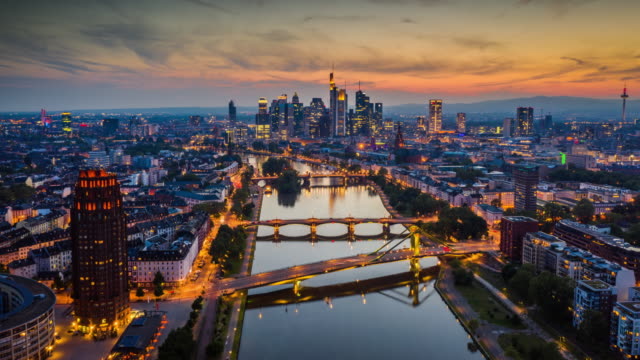
Location and Geography
Germany is in north-central Europe, bordered by Denmark, Poland, the Czech Republic, Austria, Switzerland, France, Luxembourg, Belgium, and the Netherlands. Historically, the German Reich included regions now part of Poland, Russia, and Lithuania. After unification in 1990, Germany consists of sixteen federal states, including Baden-Württemberg, Bavaria, and Berlin.
Demography
Germany’s population grew significantly from 25 million in 1815 to over 60 million by 1914, despite heavy emigration. Following World War II, the population increased due to the influx of refugees and immigrants. In 1997, the population was about 82 million, with a significant portion being immigrants or descendants of Gastarbeiter (guest workers).
Linguistic Affiliation
German is a member of the Germanic subfamily of the Indo-European languages. Major dialects include High and Low German, with Standard German evolving from a combination of East Middle and East Upper High German, popularized by Martin Luther’s Bible translation.
Culture of Gibraltar
Identification
The name “Gibraltar” originates from “Tariks Mountain,” named after Tariq-Ibn-Zayid, who conquered the Iberian peninsula in 711. Gibraltarians identify through a shared history, territoriality, and their status as British colonial subjects.
Gibraltar, a British Overseas Territory located at the southern tip of the Iberian Peninsula, has a unique colonial identity. Its strategic location has made it a cultural crossroads, influenced by the Moors, Spanish, and British. This blend of influences is evident in Gibraltar’s architecture, cuisine, and languages. The Rock of Gibraltar, a prominent natural landmark, symbolizes the territory’s historical and cultural significance.

Location and Geography
Gibraltar is a small territory at the southern tip of the Iberian peninsula, dominated by a large rock.
Demography
Gibraltar’s population includes British Gibraltarians, British military personnel, and Moroccan workers, with minority populations of Indians, Pakistanis, and Russians.
Linguistic Affiliation
English is the official language, but Yanito, a creole language with influences from various languages, is widely spoken. Minority languages include Sindhi and Arabic.
Culture of Haiti
Identification
Haiti’s name means “mountainous country,” derived from the language of the Taino Indians. After independence in 1804, it was adopted by military generals who expelled the French. The population is predominantly of African descent.
Haiti, in the Caribbean, has a revolutionary past that has profoundly influenced its cultural identity. The country’s struggle for independence from French colonial rule and its subsequent history have fostered a strong sense of national pride and cultural resilience. Haitian culture is characterized by its vibrant art, music, and religious practices, particularly Vodou, which blends African, Taino, and European elements. Festivals like Carnival and Rara are expressions of Haiti’s rich cultural heritage and communal spirit.
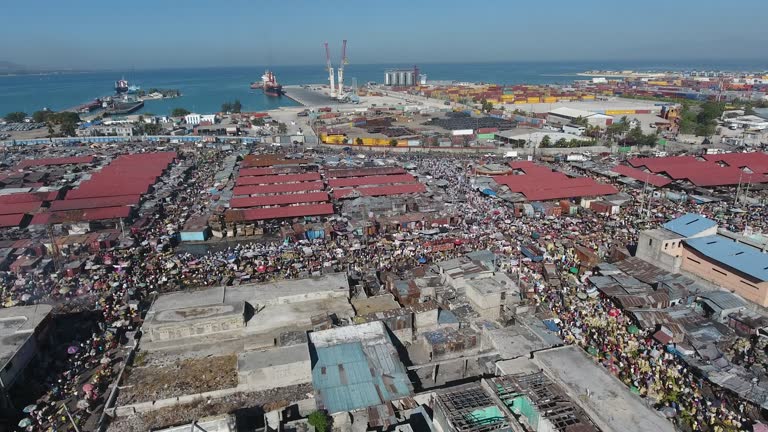
Location and Geography
Haiti occupies the western third of Hispaniola, sharing the island with the Dominican Republic. The terrain is mostly mountainous, with a tropical climate.
Demography
Haiti’s population has grown from 431,140 in 1804 to approximately 7 million by 2000. Over 60% live in rural areas, and over one million Haitians reside overseas.
Linguistic Affiliation
Kreyol is the primary language spoken by the majority, with French being the official language used by the elite and in government. English has also gained prominence due to emigration and media influence.
Culture of Paraguay
Identification
The name “Paraguay” is derived from the river dividing the eastern and western regions. The population is predominantly mestizo, with distinct cultural identities among indigenous groups and immigrants.
Paraguay, in South America, showcases a blend of indigenous and immigrant influences. The Guarani culture, with its language and traditions, is a vital part of Paraguayan identity. Spanish colonial history and subsequent waves of European immigration have also shaped the country’s cultural landscape. Paraguay’s music, particularly the harp and polka, and its culinary traditions reflect this cultural fusion.
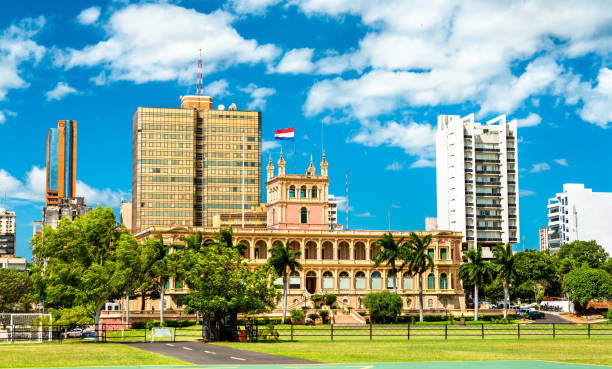
Location and Geography
Paraguay is a landlocked country in South America, bordered by Brazil, Argentina, and Bolivia. It features diverse terrains, from the arid Chaco to fertile eastern regions.
Demography
Paraguay’s population is about 5.2 million, with a high growth rate and a young demographic. Indigenous groups and immigrants, including Japanese, Mennonites, and Brazilians, contribute to the population’s diversity.
Linguistic Affiliation
Guarani and Spanish are the official languages, with Guarani spoken widely in daily life and symbolizing national identity. Spanish is the language of business and government, and many Paraguayans are bilingual.
Ensure you complete these articles 🙂
I so much love it
I was reading through some of your articles on this internet site and I conceive this
web site is real informative! Keep on posting.Blog money